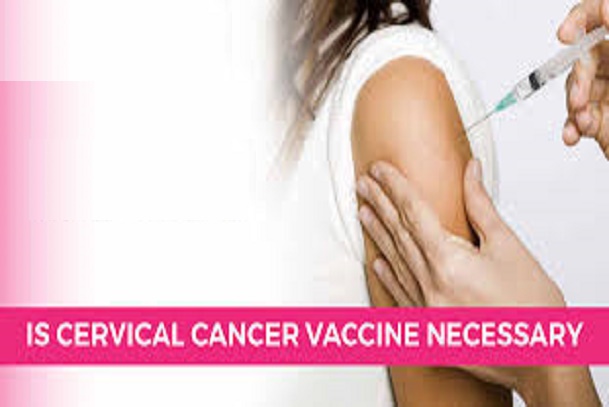 Wash your hands regularly and wear a face mask.
Learn more
Wash your hands regularly and wear a face mask.
Learn more

Most cervical cancers are associated with human papillomavirus (HPV), a sexually transmitted infection. More than 9 of every 10 cases of cervical cancer are caused by the Human Papilloma virus (HPV). Yet these HPV can be prevented through HPV vaccines.
HPV Vaccines: What You Need to Know
Human papilloma virus (HPV) vaccines are vaccines that prevent infection by certain types of human papillomavirus. Available vaccines protect against either two, four or nine types of HPV. All vaccines protect against at least HPV types 16 and 18, which cause the greatest risk of cervical cancer. It is estimated that the vaccines may prevent 70% of cervical cancer, 80% of anal cancer, 60% of vaginal cancer, 40% of vulvar cancer and possibly some mouth cancer. They additionally prevent some genital warts, with the vaccines against HPV types 4 and 9 providing greater protection.
In a recommendation signed by The World Health Organization (WHO) , HPV vaccines should be a part of routine vaccinations in all countries, along with other prevention measures. The vaccines require two or three doses depending on a person's age and immune status. Vaccinating girls around the ages of nine to thirteen is typically recommended. The vaccines provide protection for at least 5 to 10 years.
HPV vaccines are used to prevent HPV infection and therefore cervical cancer. There are currently two most widely used vaccines in the world i.e. Gardasil and Cervarix.
Who Should Get HPV Vaccination?
Regarding the age at which these vaccines could be administered, it was recommended that:
NOTE: When Gardasil was first introduced, it was recommended as prevention for cervical cancer for women that were 25 years old or younger. Evidence over the years has suggested that HPV vaccines are effective in preventing cervical cancer for women up to 45 years of age.
How Do HPV Vaccines Work?
Like other immunizations that guard against viral infections, HPV vaccines stimulate the body to produce antibodies that, in future encounters with HPV, bind to the virus and prevent it from infecting cells.
The current HPV vaccines are based on virus-like particles (VLPs) that are formed by HPV surface components. VLPs are not infectious because they lack the virus’s DNA. However, they closely resemble the natural virus, and antibodies against the VLPs also have activity against the natural virus. The VLPs have been found to be strongly immunogenic, which means that they induce high levels of antibody production by the body. This makes the vaccines highly effective.
The vaccines do not prevent other sexually transmitted diseases, nor do they treat existing HPV infections or HPV-caused disease.
How Effective Are HPV Vaccines?
HPV vaccines are highly effective in preventing infection with the types of HPV they target when given before initial exposure to the virus—which means before individuals begin to engage in sexual activity.
In the trials that led to the approval of Gardasil and Cervarix, these vaccines were found to provide nearly 100% protection against persistent cervical infections with HPV types 16 and 18 and the cervical cell changes that these persistent infections can cause. Gardasil 9 is as effective as Gardasil for the prevention of diseases caused by the four shared HPV types (6, 11, 16, and 18). The trials that led to approval of Gardasil 9 found it to be nearly 100% effective in preventing cervical, vulvar, and vaginal disease caused by the five additional HPV types (31, 33, 45, 52, and 58) that it targets. In a 2017, the World Health Organization stated that the HPV vaccines have equivalent efficacy. The Cervarix vaccine has been found to provide partial protection against a few additional HPV types not included in the vaccine that can cause cancer, a phenomenon called cross-protection.
To date, protection against the targeted HPV types has been found to last for at least 10 years with Gardasil, at least 9 years with Cervarix, and at least 6 years with Gardasil 9. Long-term studies of vaccine efficacy that are still in progress will help scientists better understand the total duration of protection.
How Safe Are These Vaccines?
The HPV vaccine is generally safe with no increased risk of serious adverse effects. HPV vaccines are approved for use in over 100 countries, with more than 100 million doses distributed worldwide. Although HPV vaccines have been found to be safe when given to people who are already infected with HPV, the vaccines do not treat infection. They provide maximum benefit if a person receives them before he or she is sexually active.
Conclusion
The combination of HPV vaccination and cervical screening can provide the greatest protection against cervical cancer. Also, vaccination is the approved public health intervention for reducing the risk of developing HPV-associated cancers at sites other than the cervix.
It is important that as many people as possible get vaccinated. Not only does vaccination protect vaccinated individuals against infection by the HPV types targeted by the respective vaccine, but also vaccination of a significant proportion of the population can reduce the prevalence of the vaccine-targeted HPV types in the population, thereby providing some protection for individuals who are not vaccinated (a phenomenon called herd immunity).
Widespread HPV vaccination has the potential to reduce cervical cancer incidence around the world by as much as 90%. In addition, the vaccines may reduce the need for screening and subsequent medical care, biopsies, and invasive procedures associated with follow-up from abnormal cervical screening, thus helping to reduce health care costs and anxieties related to follow-up procedures.